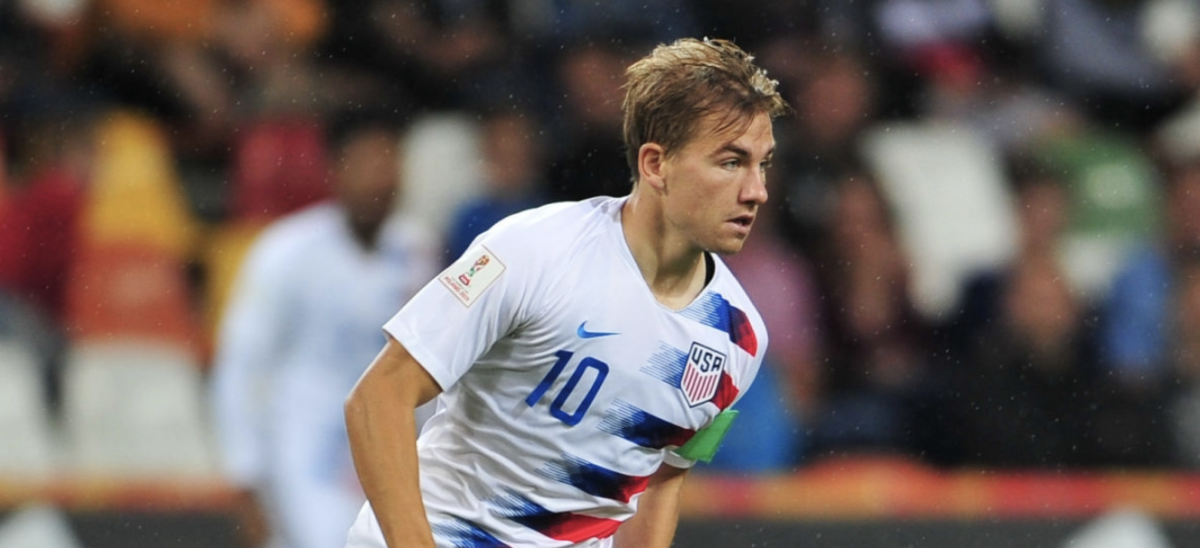The U.S. Under-20 Men’s National Team’s World Cup dreams are over.
Ecuador handed the U.S. a 2-1 defeat on Saturday in the quarterfinals, and it was a subpar performance on both sides of the ball that did the Americans in and ended their run in Poland.
Here are some thoughts on the loss and tournament in general:
OVERPOWERED PHYSICALLY
For the second straight match, the U.S. clearly struggled with the physical aspect of the match. Ecuador’s players were on average noticeably bigger, stronger, and faster, especially in the middle of the park.
What that resulted in — as it did in much of the Round of 16 showdown vs. France — is the U.S. midfield being overrun and overmatched, particularly in the first half when Ecuador was pushing for goals. The Americans could not and did not win many 50-50s or second balls, which allowed Ecuador to dictate the tempo with repeated possessions.
The threat of getting beat for speed on the dribble also took its mental toll on Chris Durkin (and to a lesser extent) Alex Mendez. In fear of getting burned, they each began to back off Ecuador’s attackers to try and contain them instead of pressuring the ball.
That led to acres of space to shoot from distance, which the Ecuadoreans realized and how they found their opener.
#U20TD ¡GOLAZO de @FEFecuador! Un exquisito disparo de @JoseCifu51 para abrir el marcador pic.twitter.com/YQpjgBd6Hl
— Telemundo Deportes (@TelemundoSports) June 8, 2019
Look at Durkin on the play. He hustles back from ways away, but then makes the mistake of setting into his defensive position instead of harrying the ballcarrier.
The interesting thing is that the U.S. is traditionally known as being a physical side. Tab Ramos clearly sacrificed some athleticism this time around in order to have more technical players on the field, which is not a bad thing but something that we’re not used to seeing.
ONCE AGAIN, NOT ENOUGH CHANCES
A repeated criticism of this group has been an inability to create clear-cut chances with frequency, and that trend continued on Saturday.
Even when Ecuador began to throw numbers back at the start of the second half to try and protect the lead, the U.S. could not muster up enough quality in the final third. There was one play early on in which substitute Ulysses Llanez found Sebastian Soto gloriously inside the penalty area, but the striker made two poor decisions:
- first, by taking a touch instead of shooting a one-timed effort
- second, by forcing the shot with his right foot instead of his left.
Soto should have done better on the play, but the Americans as a whole should have done better at generating more of that type of high-quality look on goal in order to improve their chances of finding an equalizer. They didn’t, repeatedly appearing out of ideas and solutions in the final third and settling mostly for hopeful hits from distance.
Even the U.S.’s opener came from a deflected corner kick that fell to Tim Weah (who finished exquisitely).
TIM WEAH!!! 🇺🇸🇺🇸
The @USYNT answers right back in the #U20WorldCup quarterfinals. 1-1! pic.twitter.com/SZyBefT3B7
— FOX Soccer (@FOXSoccer) June 8, 2019
For all the improved technical abilities on the field and good stretches with the ball at this World Cup, the U.S. did not not make the most of it. It was possession without production.
OVERALL SHOWING WAS MIXED BUT POSITIVE
For the third straight U-20 World Cup, the Americans’ run ended in the quarterfinals. Compared to the last two teams, however, this side showed it could play a bit more. The players were more comfortable on the ball, better at keeping possession, and combining with one another, all of which we have not seen much of with recent national teams at any level.
It is true that the performances on a game-by-game basis were inconsistent, but that is expected when it comes youth teams. The biggest takeaways from this tournament, though, should be that the U.S. as a whole showed positively and that there are players with good enough starting points that could one day make the jump to the senior national team.
Does that mean we should start crowning players and making them out to be the next coming? No. Absolutely not. Nothing in this tournament showed that any of these youngsters are going to be guaranteed difference-makers on a consistent basis at the next level. Not even Weah, who was the only player to routinely make plays but had large stretches where he was invisible.
What these players are is promising and some of them certainly have potential, but what they do next at the club level will be more important than what they did this summer.
RAMOS IS READY FOR A PRO CHALLENGE
If Tab Ramos still wants to test himself as a head coach at the pro level (and he said before the tournament began that he would like to at some point in his career), now is the time.
Ramos has led three successful U-20 World Cup showings and looks ready to to move onto a higher level to see how he does. Yes, he still has some things to work on as a coach, including his in-game management, but Ramos has demonstrated with his youth teams that he can get the most out of his groups.
Obviously, coaching a club side every day and a youth national team every couple months is different, and we do not know yet how Ramos will handle a pro locker room filled with distinct personalities and a range of players. Still, he has proven himself worthy of getting a chance to make the jump.
If he wants to keep coaching the U-20 team, U.S. Soccer would be hard-pressed to say no to him. If he wants to seek out other opportunities, though, then now is the perfect chance.

